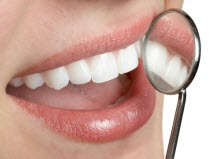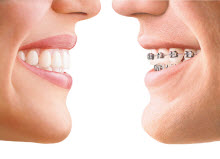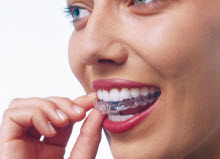Orthodontic Treatments
Initial Consultation
At this visit we will carry out a full clinical examination of the dentition as well as those facial features which can be affected by the size and shape of the underlying jaws.
Facial and dental features can also be affected by habits such as thumb-sucking, tongue thrusting or mouth breathing.
Diagnosis & Treatment Planning
Every patient is different and some patients have unique problems. It is necessary to collate information from the patient’s clinical records — study models of the teeth, xrays of the teeth and jaws and clinical photographs — to formulate a customised treatment plan for each patient.
Active Treatment
Young patients can benefit from simple treatment to help the dentition develop in a more normal way; the majority of teenage and adult patients require treatment with fixed appliances (traintrack braces) in metal or clear form or clear aligners, while in a minority of cases, we may need to involve a periodontist, restorative dentist or oral surgeon to achieve the best result.
Do You Need It?
Unattractive crowding or spacing of teeth, deep overbite, underbite, crossbite, openbite, misplaced or impacted teeth and uneven jaw growth can all point to the need for Orthodontic intervention.
Fixed Braces
Today’s fixed appliances are smaller and lighter. They come in ceramic or stainless steel versions which use very gentle forces on the teeth. There are also removable braces to guide the growth of young bones.
Ceramic Brackets
Ceramic braces are a more visually subtle form of braces that blend in with your teeth. They are also known as aesthetic, or tooth-coloured braces.
Clear Aligners
Orthodontics for the young, teenage and older adult patients can be carried out with clear aligners, such as those from Invisalign. We will be happy to guide you.
Benefits
The benefits of orthodontic treatment are many and include a healthy attractive smile which is a great source of confidence and teeth that are more likely to last a lifetime.
Debond (Brace Removal) and Retention
Having worked together to get your teeth into the best possible position, the great day arrives when braces are removed (debonded). It is most important to maintain the corrected position of the teeth and retainers are worn to achieve this. Discreet retainer wires can be bonded on the tongue side of the upper or lower front teeth in addition to removable clear or traditional acrylic and wire retainers which are worn at night.
When To wear Your Retainer
Wear your retainer as directed by your Orthodontist.
Getting Used to your Retainer
It will take a little time to get used to your retainer and you may even find that your speech is slightly altered for a few days. This is normal with a new retainer. If you develop a sore spot on your gums, call our office so that we can adjust the retainer for better comfort.
Cleaning Your Retainer
Brush your retainer daily with toothpaste. As an added measure, retainer cleaners such as Retainer Brite can be used for a more thorough cleaning. If you have a bonded wire retainer behind your front teeth, be careful to clean it as well when brushing your teeth. Do not boil your retainer to sterilize it.
How To Keep Your Retainer Safe
Follow the instructions you have been given for retainer wear which is mostly at night. When not being worn, the retainer must be stored in the case provided. Never wrap the retainer in a napkin or store it in your pocket. Keep it away from dogs and cats, as they love to chew on these appliances. Please note: an additional charge will be incurred for lost or broken retainers.
Length of Retention
Retainer wear should be regarded as long term to maintain your post-treatment result. Some may even require permanent retention to keep teeth aligned properly. We will discuss this as part of your overall treatment plan.
Get In Touch
Call
(01)-833-8897
info@crescentorthodontics.ie
Address
19 The Crescent, Clontarf, Dublin 3
Hours
Mon – Fri: 9am – 5pm
Weekends: 10am – 3m




